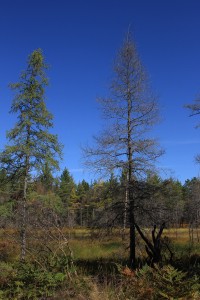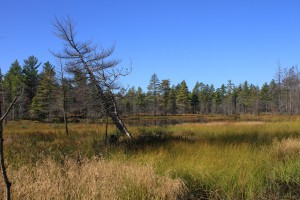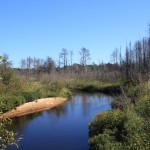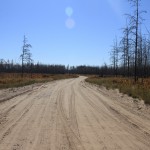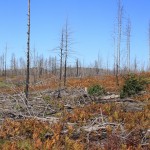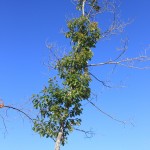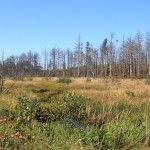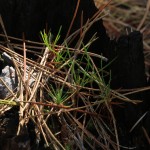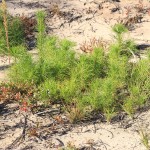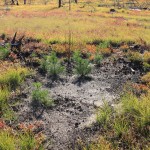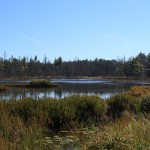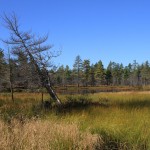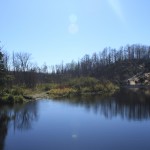At the end of September I revisited the area known as the “Duck Lake Fire” of 2012. This area is approximately 21,000 acres between Paradise and Newberry in Michigan’s Upper Peninsula. You may ask why do you keep going back to an area that has been devastated and left charred by the massive fire. Well there are a few reasons as life comes from the aftermath of what humans often think of as a wasteful tragedy. First of all I am photo documenting the recovery of this area; this will go on for years to come. Secondly, while documenting the recovery I hope to learn and show how nature can and does recover from such devastation. And third, I see art and beauty in the burned landscape. There is a certain appeal to me in trying to capture not only the reality but also some artistic images of the fire’s aftermath. And as the groundscape changes with the charred trees standing tall above, there is yet a certain beauty there.
I tried to get back to the area known as “DP1” during the fire; this area is at the southern boundary of the fire zone. As we drove back in the two tracks with my two wheel drive truck it became evident that with all the rain this past summer and fall that I had better turn back while I could. The next to the last water hole we went through the water went up on top of the back bumper of the truck and the next ones where much further across and who knows how deep.
While some areas are stark and desolate looking much of the ground is again covered in bracken ferns, sweet ferns, blueberries and grasses. Much of what is coming back is the limited flora that was there before the fire, only more abundantly in some cases. There are many Jack, Red and White Pine seedlings coming back, sometimes in crowded masses. Oaks and birches are re-growing from the bases of the burned trees. It was interesting that some smaller spots of earth that appear to be sterilized from the heat are now open sand spots with Jack Pine seedlings growing in them. These areas are surrounded by other thick vegetation.
The fire patterns also show up with a live tree next to a dead one. Near water areas such as the Swamp Lakes and Pike Lake areas, the shrubbery and mosses have recovered exceptionally well and look as if nothing had ever happened. There are also a few other species coming in that may not show up in the undisturbed Jack Pine environment, but the fire has awakened them to a more hospitable landscape for their existence. Lakes that were very low in the dry summer of 2012 are now full and even make it difficult if not impossible to shoot form the same place and angles.
We as humans often dread wildfires, but they are one natural way of regenerating the landscape and allowing for diversity in the local environment.
- Creek Wetlands
- Desolation
- Oak
- Pike Lake Wetlands
- Pine Seedlings in Stump
- Pine Seedlings
- Regrowth
- Returning Leatherleaf
- Swamp Lakes Area
- Swamp Lakes Area
- Two Hearted River
- Two Trees
 Click on the title of a post to view a full gallery of images.
Click on the title of a post to view a full gallery of images.


